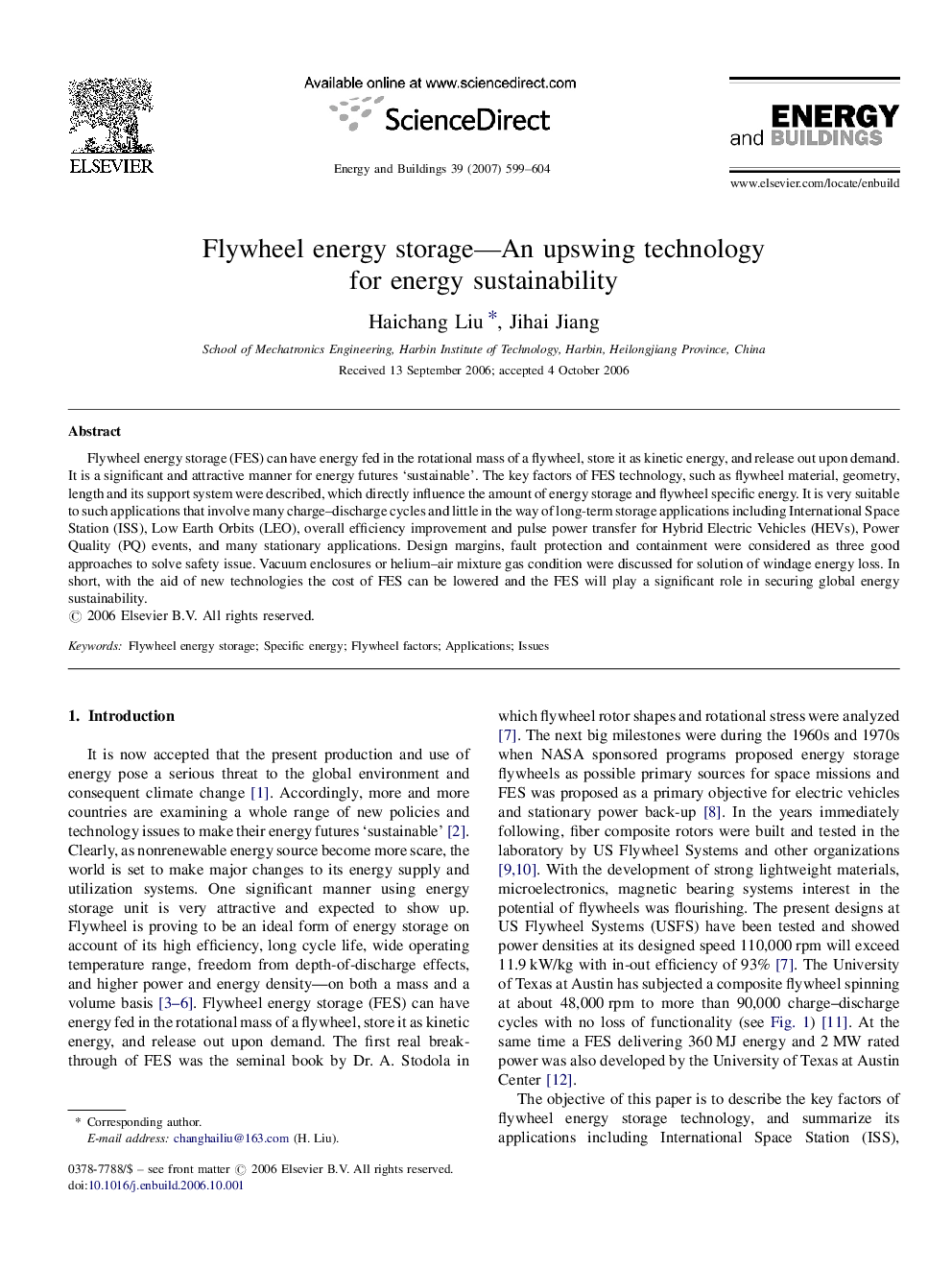| Article ID | Journal | Published Year | Pages | File Type |
|---|---|---|---|---|
| 264799 | Energy and Buildings | 2007 | 6 Pages |
Flywheel energy storage (FES) can have energy fed in the rotational mass of a flywheel, store it as kinetic energy, and release out upon demand. It is a significant and attractive manner for energy futures ‘sustainable’. The key factors of FES technology, such as flywheel material, geometry, length and its support system were described, which directly influence the amount of energy storage and flywheel specific energy. It is very suitable to such applications that involve many charge–discharge cycles and little in the way of long-term storage applications including International Space Station (ISS), Low Earth Orbits (LEO), overall efficiency improvement and pulse power transfer for Hybrid Electric Vehicles (HEVs), Power Quality (PQ) events, and many stationary applications. Design margins, fault protection and containment were considered as three good approaches to solve safety issue. Vacuum enclosures or helium–air mixture gas condition were discussed for solution of windage energy loss. In short, with the aid of new technologies the cost of FES can be lowered and the FES will play a significant role in securing global energy sustainability.
